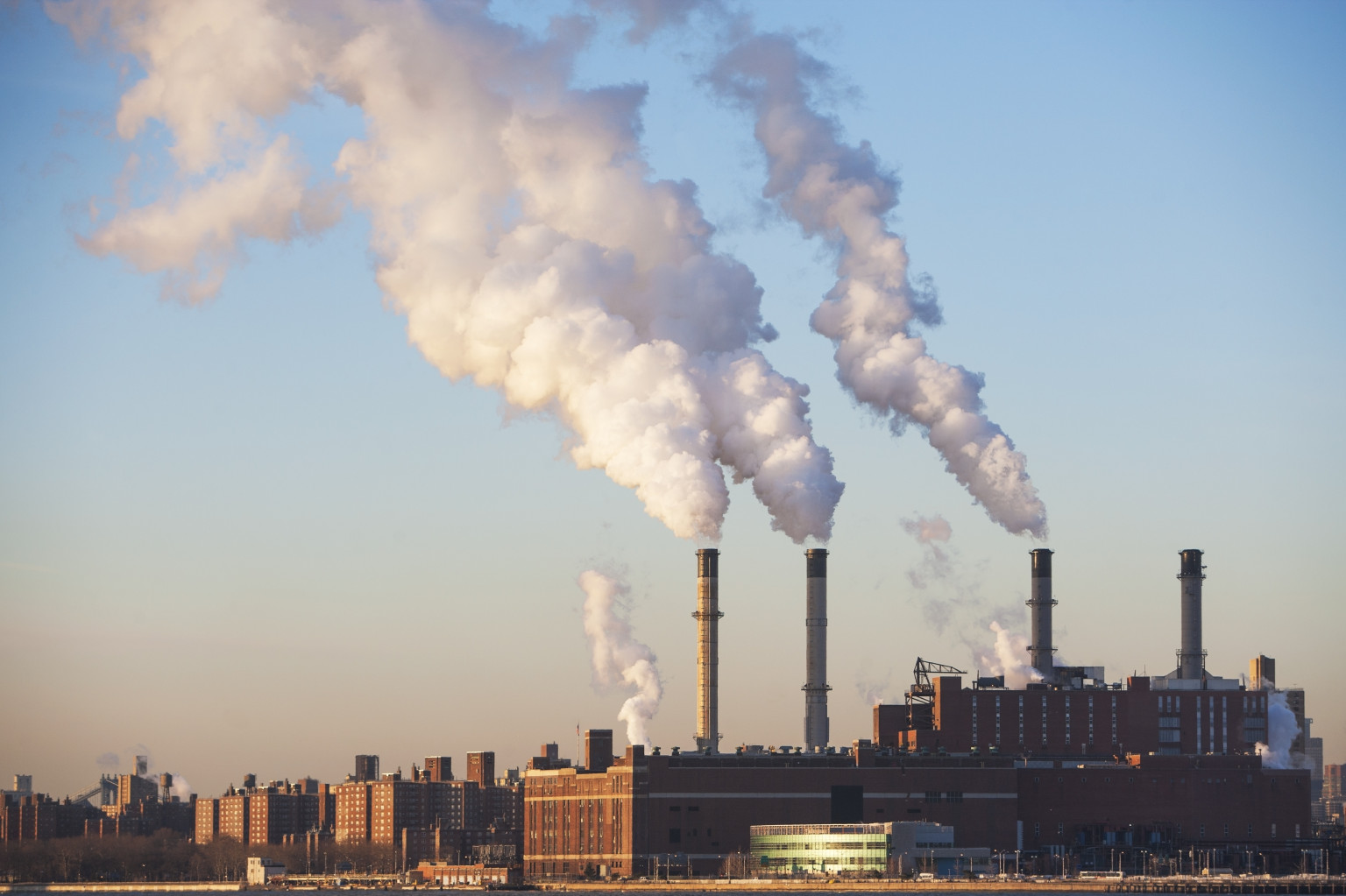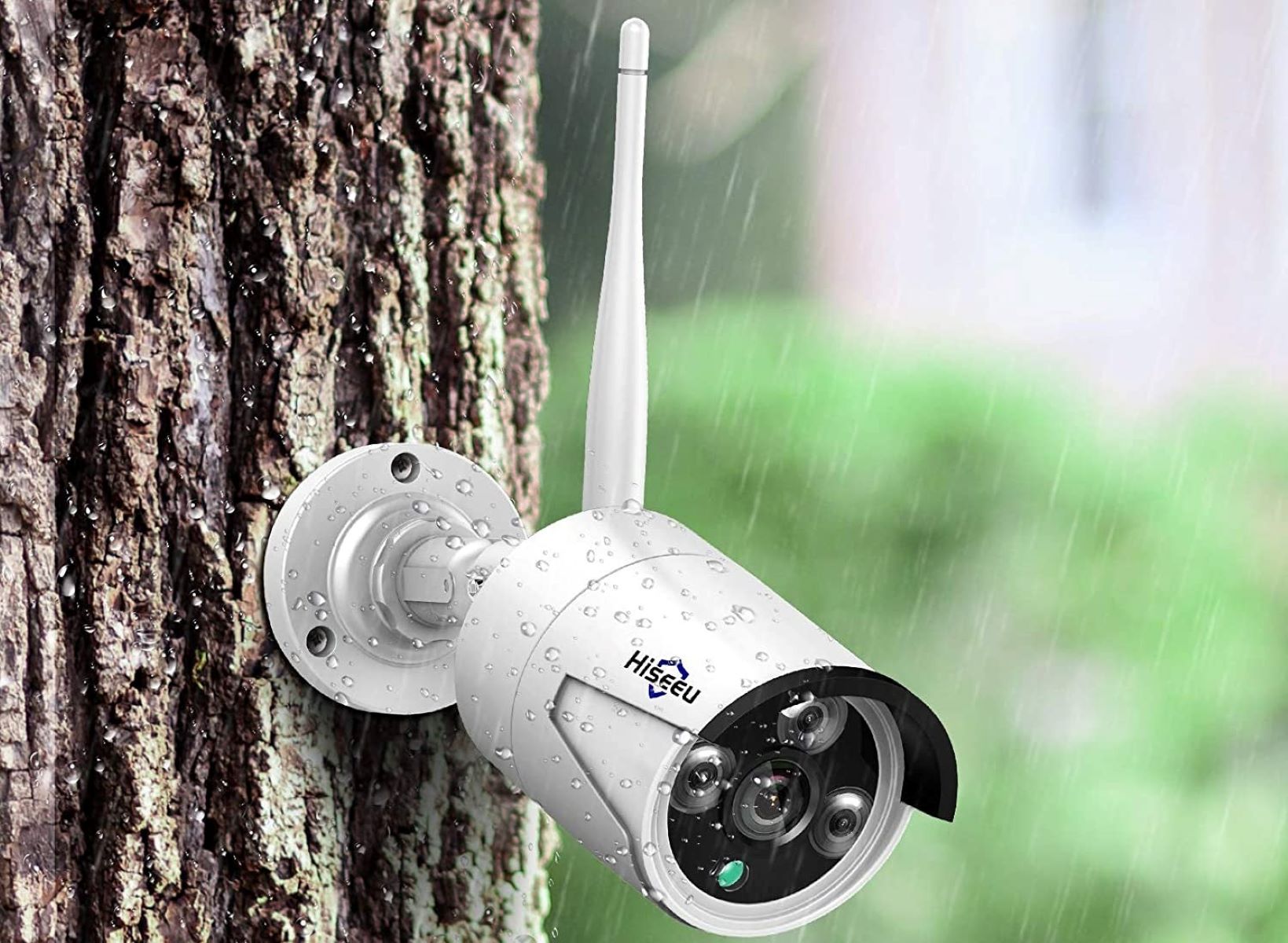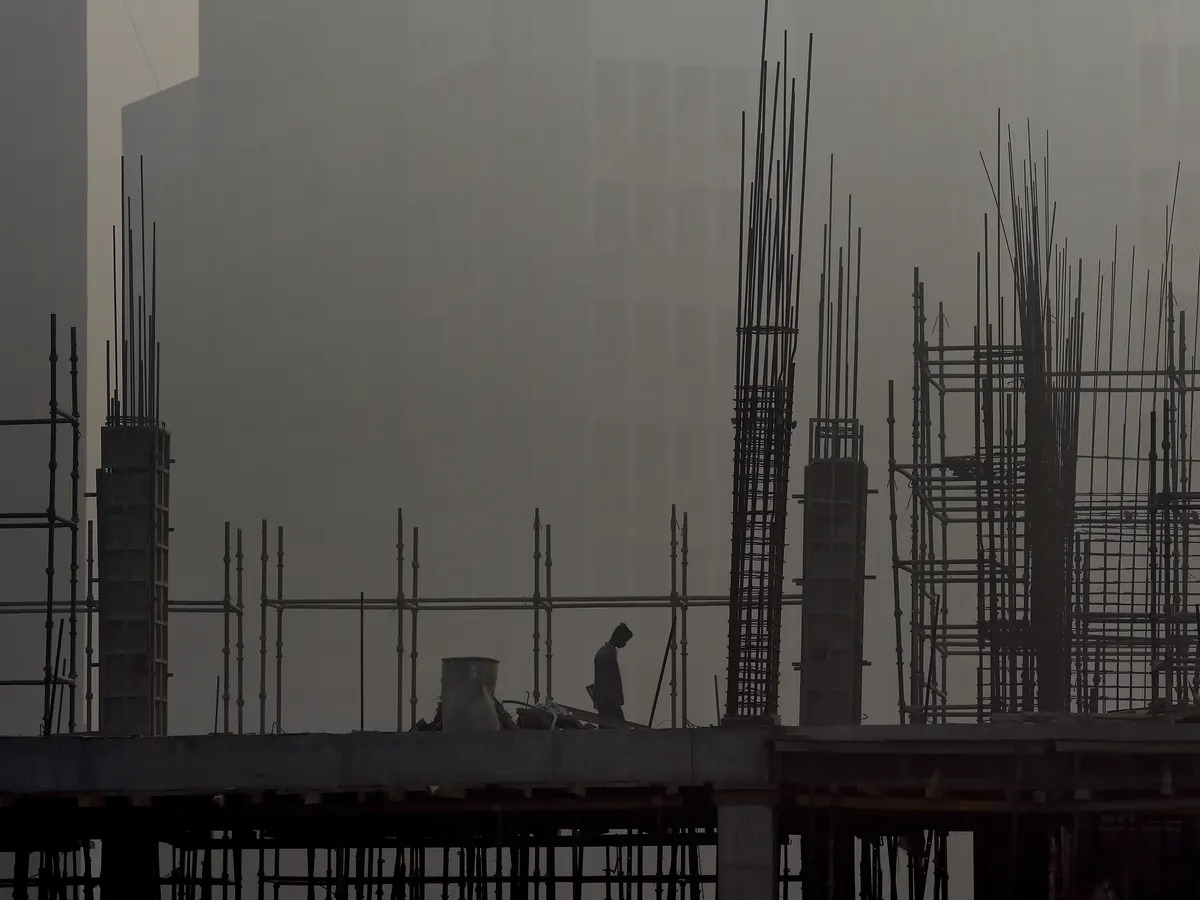Home>Furniture & Design>Outdoor Furniture>What Is The Major Source Of Outdoor Air Pollution


Outdoor Furniture
What Is The Major Source Of Outdoor Air Pollution
Published: January 14, 2024
Discover the major source of outdoor air pollution and how it relates to outdoor furniture, design, and the environment. Learn how to minimize its impact.
(Many of the links in this article redirect to a specific reviewed product. Your purchase of these products through affiliate links helps to generate commission for Storables.com, at no extra cost. Learn more)
Introduction
Outdoor air pollution is a pressing environmental concern that significantly impacts the quality of the air we breathe. It is a complex issue influenced by various sources, both natural and human-made. Understanding the major sources of outdoor air pollution is crucial in formulating effective strategies to mitigate its adverse effects on public health and the environment.
In this article, we will delve into the primary contributors to outdoor air pollution, shedding light on the key sources responsible for the presence of harmful pollutants in the atmosphere. By exploring these sources in detail, we can gain a deeper understanding of the factors driving outdoor air pollution and the potential solutions to address this critical issue.
Join us as we embark on a journey to uncover the major sources of outdoor air pollution, exploring the industrial, transportation, agricultural, and natural activities that significantly impact air quality. Through this exploration, we aim to raise awareness about the multifaceted nature of outdoor air pollution and the collective efforts needed to combat this pervasive environmental challenge.
Key Takeaways:
- Industrial activities and transportation are major sources of outdoor air pollution, emitting harmful pollutants that impact air quality and public health. Sustainable practices and innovative technologies are crucial for reducing these emissions.
- Agricultural practices and natural events also contribute to outdoor air pollution. Embracing sustainable farming methods and addressing natural sources are essential for safeguarding air quality and public health.
Industrial Emissions
Industrial activities are a major source of outdoor air pollution, releasing a diverse array of pollutants into the atmosphere. The combustion of fossil fuels in industrial processes, including manufacturing, power generation, and chemical production, generates significant quantities of air pollutants such as sulfur dioxide, nitrogen oxides, carbon monoxide, and particulate matter. These emissions contribute to the formation of smog and particulate pollution, posing serious health risks to nearby communities and ecosystems.
Furthermore, industrial facilities release volatile organic compounds (VOCs) and hazardous air pollutants (HAPs), which can have detrimental effects on air quality and human health. VOCs, emitted from activities such as painting, coating, and solvent use, react with nitrogen oxides in the presence of sunlight to form ground-level ozone, a key component of smog. This can lead to respiratory issues and exacerbate existing health conditions, particularly in urban areas with high concentrations of industrial facilities.
To address industrial emissions, regulatory measures and technological advancements play a crucial role in reducing the environmental impact of industrial operations. Implementation of emission control technologies, such as scrubbers, catalytic converters, and particulate filters, can effectively mitigate the release of harmful pollutants into the air. Additionally, the adoption of cleaner production processes and the use of renewable energy sources can significantly reduce the carbon footprint of industrial activities, leading to improved air quality and environmental sustainability.
It is essential for industries to adhere to stringent environmental regulations and invest in sustainable practices to minimize their contribution to outdoor air pollution. By embracing cleaner technologies and promoting responsible environmental stewardship, industrial emissions can be effectively managed, paving the way for a healthier and more sustainable future for our planet.
Transportation
Transportation represents a significant source of outdoor air pollution, with the combustion of fossil fuels in vehicles releasing a multitude of pollutants into the atmosphere. The widespread use of gasoline and diesel-powered vehicles, including cars, trucks, buses, and motorcycles, contributes to elevated levels of air pollutants such as carbon monoxide, nitrogen oxides, volatile organic compounds, and particulate matter.
One of the primary pollutants emitted by vehicles is nitrogen oxides (NOx), which can react with volatile organic compounds in the presence of sunlight to form ground-level ozone, a key component of smog. This can lead to respiratory issues and exacerbate health conditions, particularly in densely populated urban areas with heavy traffic congestion. Additionally, the combustion of fossil fuels in transportation also releases fine particulate matter, which can penetrate deep into the lungs and pose serious health risks, including respiratory and cardiovascular ailments.
To address the environmental impact of transportation-related emissions, various strategies and technologies have been developed to mitigate air pollution from vehicles. The widespread adoption of fuel-efficient vehicles, the use of alternative fuels such as electricity, natural gas, and biofuels, and the implementation of stringent emission standards have all contributed to reducing the environmental footprint of transportation.
Furthermore, advancements in vehicle technology, including the integration of catalytic converters, particulate filters, and selective catalytic reduction systems, have significantly lowered the emissions of harmful pollutants from vehicles. Additionally, the promotion of public transportation, biking infrastructure, and pedestrian-friendly urban planning can help reduce reliance on private vehicles and alleviate traffic-related air pollution in urban centers.
As we strive to create cleaner and more sustainable transportation systems, it is imperative to continue investing in innovative solutions that prioritize environmental conservation and public health. By embracing alternative fuels, enhancing public transit options, and promoting eco-friendly modes of transportation, we can work towards reducing the environmental impact of transportation-related emissions and fostering a healthier, more breathable atmosphere for all.
The major source of outdoor air pollution is the burning of fossil fuels, such as in vehicles, power plants, and industrial processes. Reducing our reliance on these sources can help improve air quality.
Agricultural Activities
Agricultural practices contribute significantly to outdoor air pollution through the release of various pollutants into the atmosphere. One of the primary sources of air pollution from agriculture is the emission of ammonia, a byproduct of livestock waste and fertilizer application. Ammonia can react with other air pollutants to form fine particulate matter, which can have adverse effects on air quality and human health.
Furthermore, the use of chemical fertilizers and pesticides in agricultural activities can lead to the release of volatile organic compounds (VOCs) and other hazardous air pollutants (HAPs). These compounds can contribute to the formation of ground-level ozone and smog, particularly in agricultural regions with intensive farming practices. Additionally, the burning of agricultural residues and crop stubble can release significant quantities of particulate matter and carbonaceous aerosols into the atmosphere, further exacerbating outdoor air pollution.
To address the air pollution associated with agricultural activities, sustainable farming practices and technological innovations play a pivotal role in mitigating the environmental impact. The adoption of precision agriculture techniques, including the use of advanced irrigation systems, controlled-release fertilizers, and integrated pest management, can help minimize the release of pollutants from agricultural operations.
Furthermore, the implementation of conservation tillage practices and the promotion of agroforestry can contribute to reducing soil erosion and the need for extensive fertilizer use, subsequently lowering the emission of air pollutants from agricultural lands. Additionally, the utilization of anaerobic digesters to capture and utilize methane emissions from livestock waste can help mitigate the environmental impact of agricultural activities on air quality.
As the global population continues to grow, the demand for food production will increase, making it imperative to prioritize sustainable and eco-friendly agricultural practices. By embracing innovative technologies and promoting responsible land management, the agricultural sector can play a pivotal role in reducing its contribution to outdoor air pollution, fostering a healthier environment for both rural communities and urban populations.
Natural Sources
While human activities significantly contribute to outdoor air pollution, natural sources also play a crucial role in the release of various pollutants into the atmosphere. Volcanic eruptions, wildfires, and biogenic emissions are among the primary natural sources of air pollution, releasing a diverse array of pollutants that can impact air quality on both regional and global scales.
Volcanic eruptions can release large quantities of sulfur dioxide, ash, and other particulate matter into the atmosphere, leading to temporary spikes in air pollution levels. These emissions can have far-reaching effects, impacting air quality, weather patterns, and climate dynamics. While volcanic activity is a natural phenomenon, its influence on outdoor air pollution underscores the interconnectedness of natural processes and environmental quality.
Wildfires, whether ignited by lightning or human activities, can release substantial amounts of particulate matter, carbon monoxide, and volatile organic compounds into the air. The smoke and emissions from wildfires can significantly degrade air quality in the vicinity of the affected areas, posing health risks to both local populations and ecosystems. Additionally, the long-range transport of wildfire smoke can impact air quality in distant regions, highlighting the complex interplay between natural events and outdoor air pollution.
Biogenic emissions, which include the release of volatile organic compounds from vegetation, soil, and marine sources, also contribute to the formation of secondary pollutants such as ground-level ozone and particulate matter. While these emissions are natural and essential components of the Earth’s ecosystems, their interaction with anthropogenic pollutants can exacerbate outdoor air pollution, particularly in regions with dense vegetation and abundant natural sources of VOCs.
As we navigate the intricate dynamics of outdoor air pollution, it is crucial to recognize the role of natural sources in shaping air quality and environmental conditions. While human activities have a significant impact on outdoor air pollution, understanding and addressing the contributions of natural sources are essential for developing comprehensive strategies to safeguard air quality and mitigate the effects of outdoor air pollution on public health and the environment.
Read more: What Major For Interior Design
Conclusion
Outdoor air pollution is a multifaceted environmental challenge influenced by a diverse range of sources, both human-made and natural. From industrial emissions and transportation-related pollutants to agricultural activities and natural events, the contributors to outdoor air pollution are varied and complex, necessitating comprehensive strategies to address this critical issue.
Industrial emissions, stemming from manufacturing, power generation, and chemical production, release a multitude of pollutants into the atmosphere, underscoring the need for stringent regulations and sustainable practices to mitigate their environmental impact. The transportation sector, powered predominantly by fossil fuels, contributes significantly to outdoor air pollution, emphasizing the importance of transitioning to cleaner and more sustainable modes of transportation to reduce emissions and improve air quality.
Agricultural activities, while essential for food production, also play a role in outdoor air pollution through the release of ammonia, volatile organic compounds, and particulate matter. By embracing sustainable farming practices and innovative technologies, the agricultural sector can minimize its contribution to air pollution while ensuring food security for a growing global population.
Furthermore, natural sources such as volcanic eruptions, wildfires, and biogenic emissions add complexity to the dynamics of outdoor air pollution, highlighting the interconnectedness of natural processes and environmental quality. Understanding and addressing the contributions of natural sources are essential for developing comprehensive strategies to safeguard air quality and mitigate the effects of outdoor air pollution on public health and the environment.
In conclusion, combating outdoor air pollution requires a concerted effort to address the diverse sources of pollutants, emphasizing the need for sustainable practices, technological innovations, and policy interventions. By raising awareness, fostering collaboration, and prioritizing environmental stewardship, we can work towards a future where clean, breathable air is accessible to all, ensuring the well-being of current and future generations.
Frequently Asked Questions about What Is The Major Source Of Outdoor Air Pollution
Was this page helpful?
At Storables.com, we guarantee accurate and reliable information. Our content, validated by Expert Board Contributors, is crafted following stringent Editorial Policies. We're committed to providing you with well-researched, expert-backed insights for all your informational needs.















0 thoughts on “What Is The Major Source Of Outdoor Air Pollution”